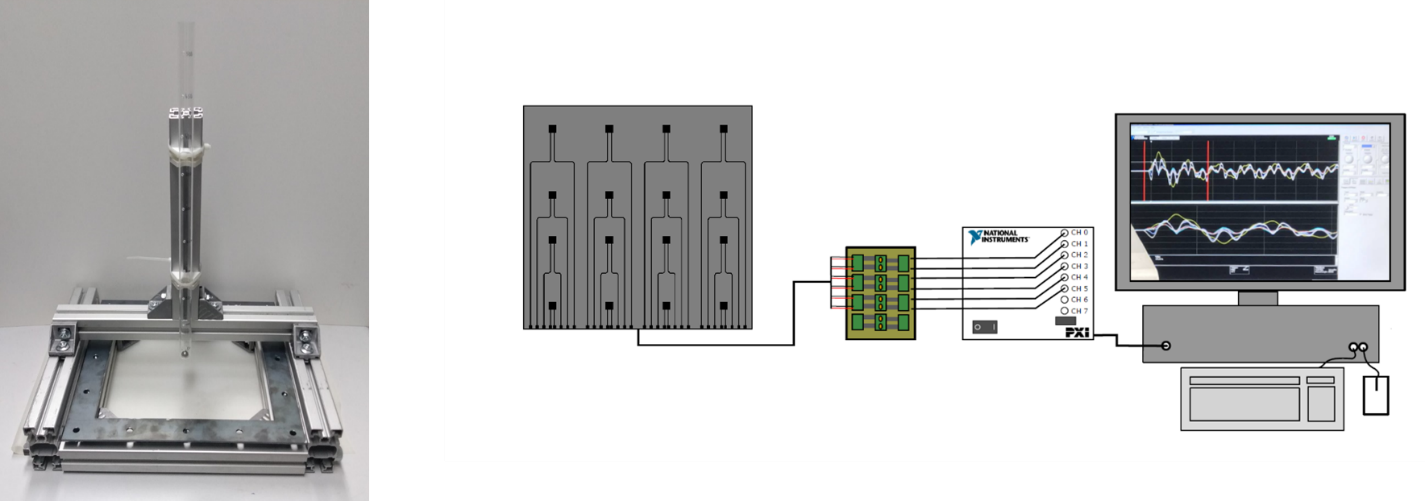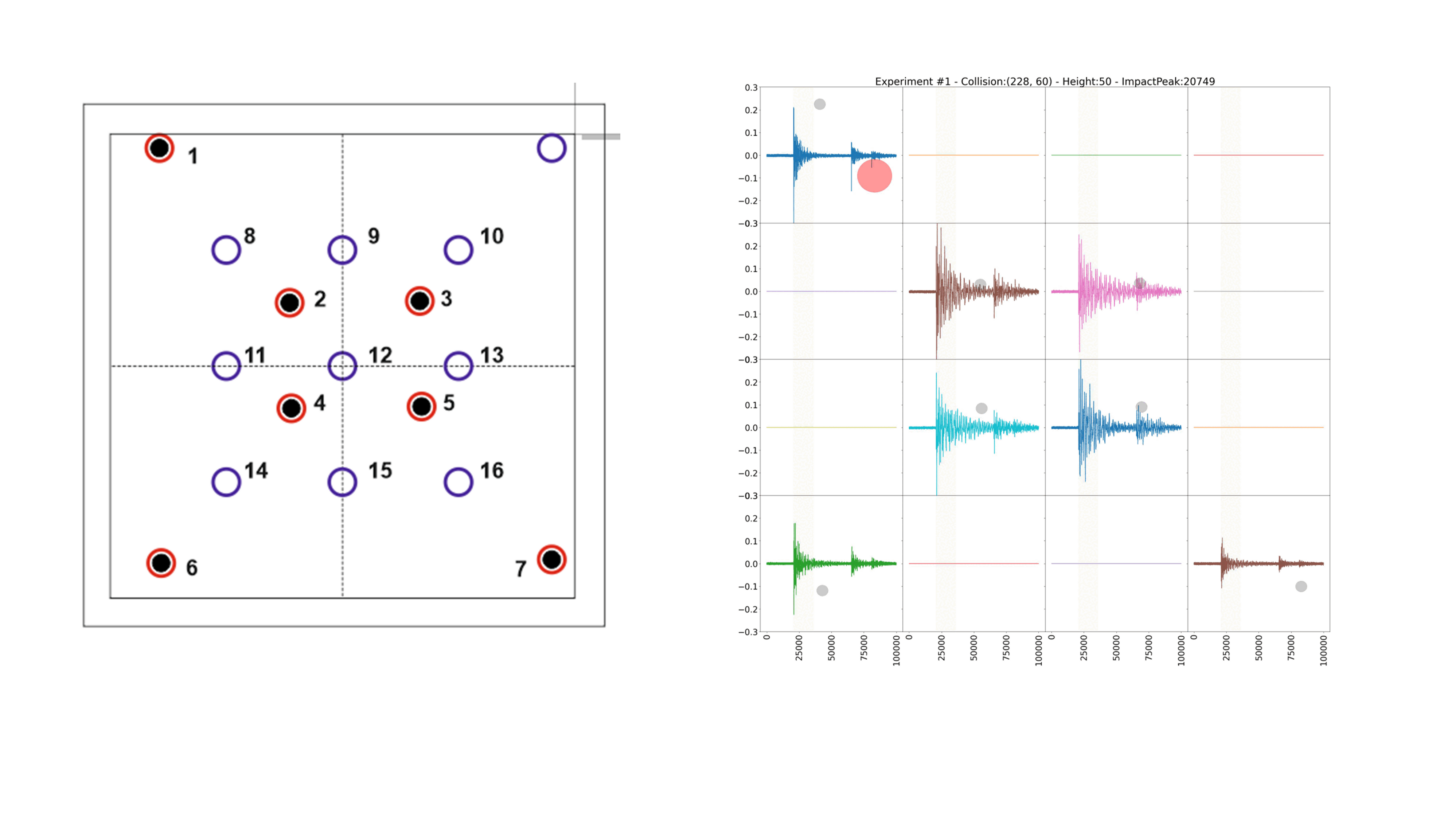Impact Loading Assessment in High-Performance CFRP Composite Structures for SHM
Title: Impact Loading Assessment in High-Performance CFRP Composite Structures for SHM Using Embedded Sensors and Actuators
Research Area: Engineering and Business
Carbon Fiber-Reinforced Polymer (CFRP) composites find extensive applications across various industries including the aerospace industry and automotive sector due to their exceptional properties. Smart CFRP structures can greatly reduce maintenance costs and environmental footprints by providing self-monitoring capabilities using tailored embeddable sensor-actuator layers (TEmSAL). This work employs machine-learning methods for high-accuracy localization of impacts and determination of impact forces. It will demonstrate the potential of machine learning and real-time data post-processing techniques to achieve state-of-the-art accuracy in impact detection, localization, and force measurement.
Aims
- Evaluation and analysis of impact data from embedded sensor-actuator array in smart CFRP composites
- Introducing a smart structure self-health-monitoring capabilities using:
- High-resolution localization of the impact event
- High-accuracy estimation of the impact force
- Substantial decrease in maintenance and monitoring costs
- Optimizing the sensor array setup
- Methodology for autonomous self-sensing SHM
- Develop a structural modelling environment using FEM to generate virtual ground truth data sets to assess complex geometries
Problem
The integrity of composite structures can be significantly compromised by damage, sometimes leading to catastrophic failure, emphasizing the critical nature of monitoring for early detection and prevention. However, existing real-time, continuous, and remote monitoring methods for CFRP-based composite components are costly and inefficient. Therefore, self-health monitoring approaches have to be developed being crucial to ensure the integrity of the material at reduced monitoring costs.
Practical example created during the project (if applicable)

We set up a lab-scale plate impact testing setup to provide experimental sensor data. It allows the generation of reproducible at a high accuracy in terms of impact location and energy. A specimen panel with multiple integrated sensors was manufactured to conduct the experimental campaign. As of today, data from over 100 impact experiments are available.

Technology
Embedded piezoelectric elements in CFRP-composite structures are used. The technological concept of tailored embeddable sensor-actuator layers (TEmSAL) allows the manufacturing and pre-assembling of functional layers with actor-sensor networks and their integration into arbitrary composite structures. This allows the measurement of impact events. The collected data goes through pre-processing steps to ensure its integrity, coherency, and noise reduction. The cleaned data then is processed both as sampled data and as time series. For the latter, a stacked network of Long short-term memory (LSTM) is trained. A custom-designed deep neural network is trained using the sampled data, and finally, a classical random forest approach is used as the baseline. Furthermore, in the time series analysis, a majority voting mechanism is used which significantly increases the accuracy of impact localization.

Outlook
Current status
- Stare of the art in impact localization via TEmSAL in smart CFRP composites
- Enabling accurate estimation of location and force with minimal training data
- Near real-time self-health-monitoring
Future work
- Simulations to replace physical tests and synthesise training data
- Optimizing sensors array layout in TEmSAL
- Fine tuning of the ML models for complex geometries
- Synthesizing data, e.g. via Generative Adversarial Networks (GANs)
- Explore capabilities of Graph Neural Networks (GNNs) to optimize performance
- Explore self-sensing capabilities in terms of an integrated excitation and measurement
Publications
- Hornig, A., Frohberg, R., Bätzel, T., Gude, M., & Modler, N. (2022). Embedded sensing and actuating in CFRP composite structures—concept and technology demonstration for tailored embeddable sensor-actuator layers (TEmSAL). Smart materials and structures, 31(9), Artikel 095007. https://doi.org/10.1088/1361-665X/ac7d23
- Bätzel, T., Böhm, H., Hornig, A., & Gude, M. (2023). Active SHM and impact sensing for composite aerospace structures based on the TEmSAL technology – demonstration on a generic aircraft engine containment segment. In Proceedings of the 10th ECCOMAS Thematic Conference on Smart Structures and Materials (Smart 2023) (S. 477-488) https://doi.org/10.7712/150123.9802.444217
- Hornig, A., Winkler, A., Bauerfeind, E., Gude, M., & Modler, N. (2021). Delamination behaviour of embedded polymeric sensor and actuator carrier layers in epoxy based CFRP laminates—a study of energy release rates. Polymers, 13(22), Artikel 3926. https://doi.org/10.3390/polym13223926
- Cuomo, S., Bätzel, T., Modler, N., Hornig, A., & Meo, M. (2022). High velocity impact on generic CFRP blade specimen: Baseline free method for impact localisation and damage assessment on complex structures. Smart materials and structures, 31(6), Artikel 065024. https://doi.org/10.1088/1361-665X/ac6d90
Team
Lead
- Prof. Dr. Maik Gude
- Dr. Andreas Hornig
Team Members
- Dr. Siavash Ghiasvand
- Johannes Gerritzen
Partners




